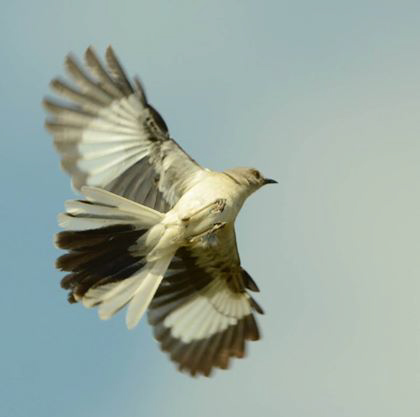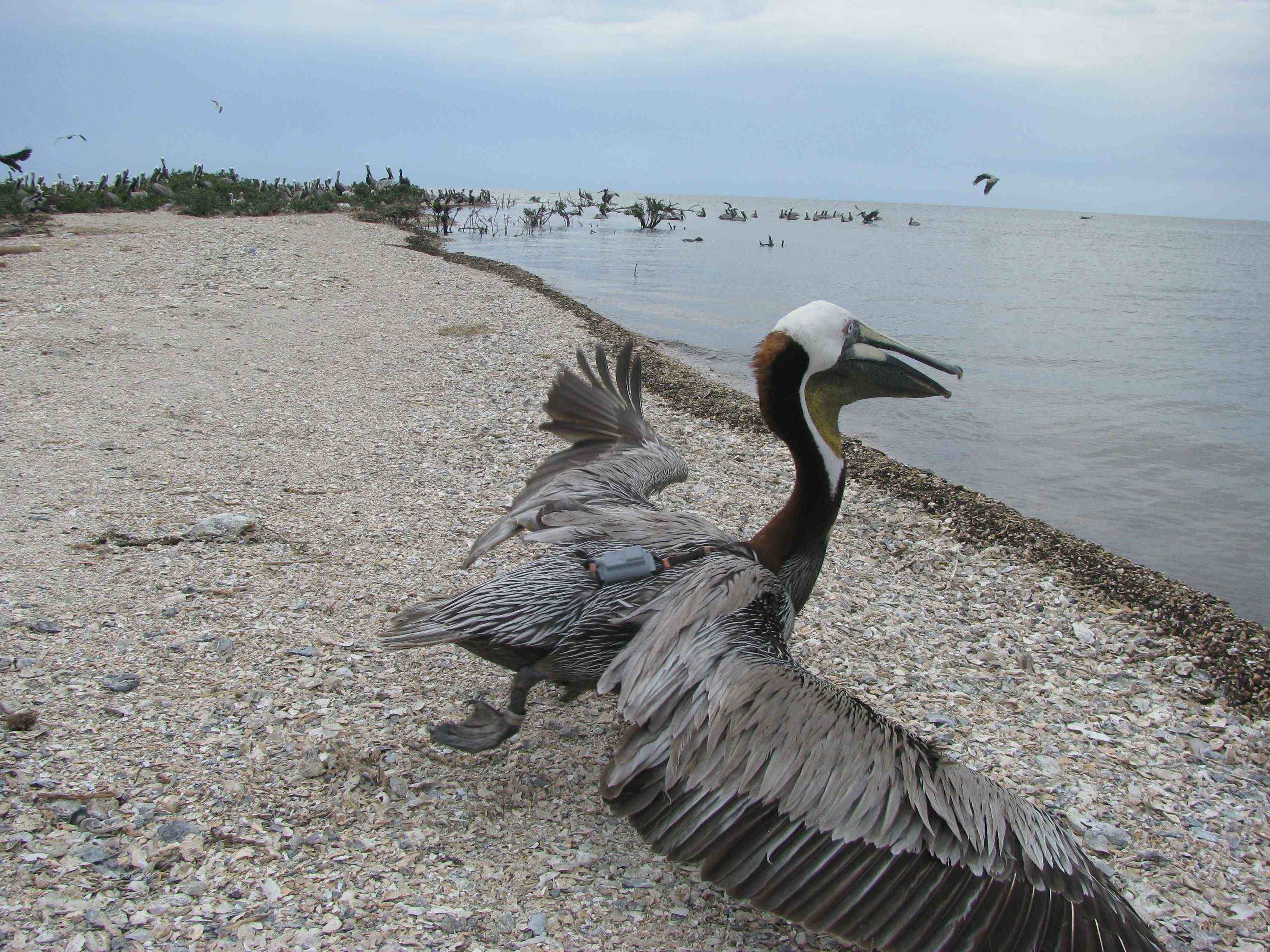Annelise Blanchette is now furthering this work by developing cognitive behavior assays that can be applied to adult mockingbirds in the field. She is also considering ways to measure the physiological impact of lead on mockingbirds through endocrine and genomic mechanisms. This work is in early stages, but is likely to have important implications for pet owners, veterinarians, and professionals that manage urban wildlife.


Gulf Coast Ecology

Our Gulf coast research has focused on the foraging ecology of the brown pelican (Pelecanus occidentalis), an iconic symbol of the Gulf and a top predator that presents a valuable opportunity to explore applied questions as well as those with broader implications for behavioral ecology. In collaboration with Dr. Paul Leberg from the University of Louisiana at Lafayette, Brock Geary used GPS telemetry to collect high-resolution movement and foraging data to better understand how individuals modify foraging behaviors during the demanding breeding season, and how these different ‘strategies’ may allow individuals to weather the effects of environmental instability.
Related Publications
2019
McClelland, S.T., R.D. Ribeiro, H.W. Mielke, M.E. Finkelstein, C.R. Gonzalez, J.A. Jones, J. Komdeur, E. Derryberry, E.B. Saltzberg, and J. Karubian. 2018. Sub-lethal exposure to lead is associated with heightened aggression in an urban songbird. Science of the Total Environment. 654: 593-603. PDF
2018
Geary, B., S.T. Walter, P.L. Leberg, and J. Karubian. 2018. Condition-dependent foraging strategies in a coastal seabird: evidence that the rich get richer. Behavioral Ecology. 30: 356-363. PDF
2017
Geary B, S.M. Longest, K. Ottewell, S.M. Lantz, S.T. Walter, J. Karubian, and P.L. Leberg 2017. Genetic structure of brown pelicans (Pelecanus occidentalis) in the northern Gulf of Mexico in the context of human management and disturbance. PLoS ONE 12(10): e0185309. PDF
2014
Walter, S. T., M. R. Carloss, T. J. Hess, and P. Leberg. 2014. Demographic trends of Brown Pelicans in Louisiana before and after the Deepwater Horizon oil spill. Journal of Field Ornithology 85:4 421-429. PDF
2014
Walter, S.T., P. L. Leberg, J. J. Dindo, and J. Karubian. 2014. Factors influencing Brown Pelican (Pelecanus occidentalis) foraging movement patterns during the breeding season. Canadian Journal of Zoology 92:885-891. PDF
2013
Walter, S.T., M.R. Carloss, T.J. Hess, G. Athrey, and P.L. Leberg. 2013. Brown Pelican movement patterns and population structure. Condor 115:788-799. PDF
2013
Walter, S.T., M.R. Carloss, T.J. Hess, and P.L. Leberg. 2013. Hurricane, habitat degradation, and land loss effects on Brown Pelican nesting colonies. Journal of Coastal Research 29:187-195. PDF
2013
Walter, S.T., M.R. Carloss, T.J. Hess, G. Athrey, and P.L. Leberg. 2013. Brown Pelican (Pelecanus occidentalis) colony initiation attempts: Translocations and decoys. Waterbirds 36:53-62. PDF
